Contents
Central and East
European Politics
From Communism to Democracy
Fourth Edition
Edited by
Sharon L. Wolchik
The George Washington University
Jane Leftwich Curry
Santa Clara University
ROWMAN & LITTLEFIELD
Lanham Boulder New York London
Executive Editor: Susan McEachern
Editorial Assistant: Katelyn Turner
Senior Marketing Manager: Kim Lyons
Credits and acknowledgments for material borrowed from other sources, and reproduced with permission, appear on the appropriate page within the text.
Published by Rowman & Littlefield
An imprint of The Rowman & Littlefield Publishing Group, Inc.
4501 Forbes Boulevard, Suite 200, Lanham, Maryland 20706
www.rowman.com
Unit A, Whitacre Mews, 26-34 Stannary Street, London SE11 4AB, United Kingdom
Copyright 2018 by The Rowman & Littlefield Publishing Group, Inc.
First Edition 2007. Second Edition 2010. Third Edition 2014.
All rights reserved. No part of this book may be reproduced in any form or by any electronic or mechanical means, including information storage and retrieval systems, without written permission from the publisher, except by a reviewer who may quote passages in a review.
British Library Cataloguing in Publication Information Available
Library of Congress Cataloging-in-Publication Data
Names: Wolchik, Sharon L., editor. | Curry, Jane Leftwich, 1948 editor.
Title: Central and East European Politics: from communism to democracy / edited by Sharon L. Wolchik, George Washington University, Jane Leftwich Curry, Santa Clara University.
Description: Fourth edition. | Lanham : Rowman & Littlefield, [2018] |
Includes bibliographical references and index.
Identifiers: LCCN 2017058150 (print) | LCCN 2017059309 (ebook) | ISBN
9781538100899 (electronic) | ISBN 9781538100875 (cloth : alk. paper) |
ISBN 9781538100882 (pbk. : alk. paper)
Subjects: LCSH: Europe, EasternPolitics and government1989 | Europe,
CentralPolitics and government1989 | Post-communismEurope, Eastern.
| Post-communismEurope, Central. | DemocracyEurope, Eastern. |
DemocracyEurope, Central. | North Atlantic Treaty OrganizationEurope,
Eastern. | North Atlantic Treaty OrganizationEurope, Central. | European
UnionEurope, Eastern. | European UnionEurope, Central.
Classification: LCC DJK51 (ebook) | LCC DJK51.C437 2018 (print) | DDC
947.0009/049dc23
LC record available at https://lccn.loc.gov/2017058150
 The paper used in this publication meets the minimum requirements of American National Standard for Information SciencesPermanence of Paper for Printed Library Materials, ANSI/NISO Z39.48-1992.
The paper used in this publication meets the minimum requirements of American National Standard for Information SciencesPermanence of Paper for Printed Library Materials, ANSI/NISO Z39.48-1992.
Printed in the United States of America
We dedicate this edition to our families and our colleagues. We are forever grateful for our families love and curiosity about the world. We are also grateful for the important role they play in our lives. We are grateful for our colleagues support over the years and for all they have shared with us.
Contents
Sharon L. Wolchik and Jane Leftwich Curry
Valerie Bunce
Sharon Fisher
Kevin Deegan-Krause
Zsuzsa Cserg
Vello Pettai and Eva-Clarita Pettai
Ronald H. Linden
Joshua Spero
Jane Leftwich Curry
Sharon L. Wolchik
Federigo Argentieri
Daina S. Eglitis
Janusz Bugajski
Monica Ciobanu
Elez Biberaj
Mark Baskin and Paula Pickering
Taras Kuzio
Sharon L. Wolchik and Jane Leftwich Curry
Illustrations
Acknowledgments
We would like to acknowledge the support of the Institute for European, Russian, and Eurasian Studies at the George Washington University, the Centre for East European Studies at the University of Warsaw, and Santa Clara University.
We thank Nancy Meyers, Bret Barrowman, Amber Footman, Isabelle Chiaradia, Michael Kilbane, Melissa Aten, Christine Cannata, Allison Beresford, Kallie Knutson, Gabriel Kelly, and Glen Kelley for their research assistance for this and previous editions of this volume. We also wish to thank Malgorzata Alicja Gudzikowska for her help in finding and getting permissions when it seemed hopeless.
We also thank Aurora Zahm for her remarkable dedication to this edition and coming to Warsaw to get it finished. Elwood Mills deserves special thanks for his seemingly unending work and patience in preparing maps and illustrations.
We thank all of our previous contributors for their patience, persistence, and diligence in preparing their contributions for the first three editions of this volume. We are especially grateful to those whom we asked to update their chapters for the fourth edition and to the new contributors to this edition.
We also want to acknowledge the intellectual debts we owe not only to Vclav Bene, to whom the first and second editions of this book were dedicated, but also to others whose mentoring and teaching have shaped our views of Central and East European affairs and comparative politics. Our colleagues and friends in Central and Eastern Europe have challenged and informed us, giving us valuable insights and untold hours of their time. For that, we owe them much. We are also grateful to the generations of students whose interactions with us helped us learn what students want and need to know about the politics of the region.
We are indebted, as always, to our families for their support in this endeavor, as in all others. This book, as our other work in this region, has been a part of their lives as well as ours, and they have shared in its creation and revision through dinner-table conversations and email and phone updates. We are gratified by their interest in Central and Eastern Europe, evident in their travel, study, and research in the region.
Finally, the idea for this book grew out of our common difficulty in finding up-to-date, accessible materials about the politics of Central and Eastern Europe after communism. But its origin actually dates to 1970, when we found ourselves beginning the study of what was then termed Eastern Europe with Vclav Bene at Indiana University. Our meeting at the reception for new graduate students led to a friendship that has seen us through graduate school, the births and growth of six children between us, and nearly fifty years of professional and personal triumphs and tragedies. In addition to all those we have thanked for their role in producing this book, we are grateful for each other and for our friendship.
Part I
INTRODUCTION
CHAPTER 1
Democracy, the Market, and
the Return to Europe
From Communism to the European Union and NATO
Sharon L. Wolchik and Jane Leftwich Curry
In 1989, the unthinkable happened: communist rule collapsed, virtually like a house of cards, across what had been the former Soviet bloc. As Timothy Garton Ash said, In Poland it took ten years, in Hungary ten months, East Germany ten weeks: perhaps in Czechoslovakia it will take ten days! This statement, although not entirely accurate, captures several crucial aspects of the end of communist rule: it was fast, unexpected, and unplanned.
After several decades of communism and the Cold War that most had assumed meant a Europe irreversibly divided between East and West, the countries of Central and Eastern Europe were once again free to chart their own courses. However, return to Europe and transitions from communism have not been easy for these states. Czechoslovakia, Yugoslavia, and the Soviet Union came apart, creating, from what had been eight states, twenty-nine states, nineteen of which are geographically in Europe. In the process, the collapse of Yugoslavia brought the first European war since the end of World War II. Even when their institutions were transformed to look and work like those in the established democracies of Western Europe, they often did not work in the same ways. Less than thirty years later, the democratic structures in two of what were two of Central Europes most successful states have turned into illiberal democracies with free elections but political leaderships that have eliminated the independent power of the courts, the press, and other institutions that are crucial to democracy. Populist candidates and parties have also appeared elsewhere in the area.

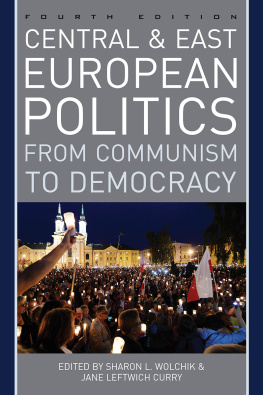

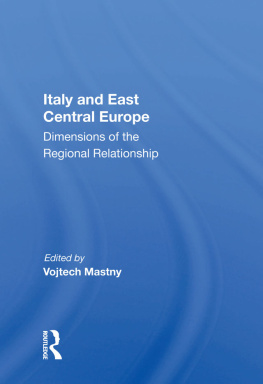
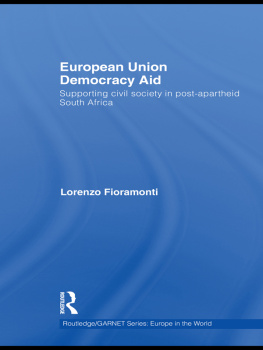

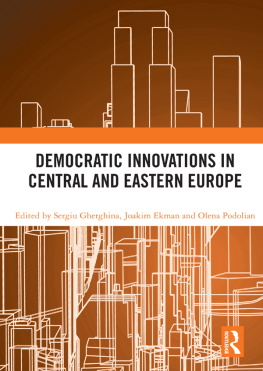
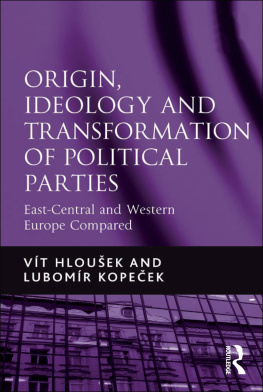
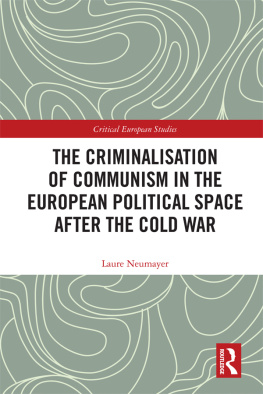
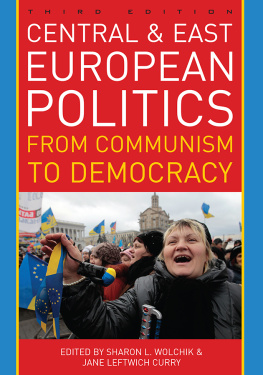
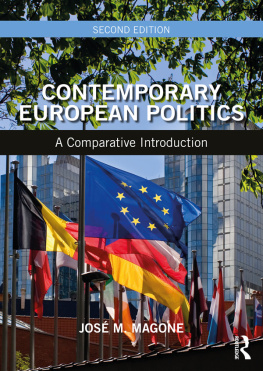

 The paper used in this publication meets the minimum requirements of American National Standard for Information SciencesPermanence of Paper for Printed Library Materials, ANSI/NISO Z39.48-1992.
The paper used in this publication meets the minimum requirements of American National Standard for Information SciencesPermanence of Paper for Printed Library Materials, ANSI/NISO Z39.48-1992.